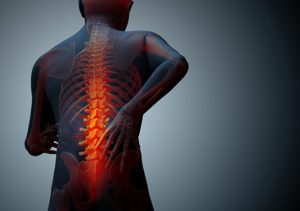 If you’re like most active people today, you’ve got a busy life. In most cases, that busy life is being documented by communicating with friends on social media. Whether it’s Facebook, Twitter, Instagram, or LinkedIn, with every post and every picture or video posted, you are building a very detailed record of your life in the public domain.
If you’re like most active people today, you’ve got a busy life. In most cases, that busy life is being documented by communicating with friends on social media. Whether it’s Facebook, Twitter, Instagram, or LinkedIn, with every post and every picture or video posted, you are building a very detailed record of your life in the public domain.
Through the years, we’ve all built records of our lives through photo albums, journals, and by telling stories among friends and loved ones about experiences in our lives. The difference is all of those life records have the highest possible privacy setting. Since the age of social media, the standard of what is public and what is private has become blurred. And this becomes important if you are involved in an accident that leaves you seriously injured.
If you have retained an attorney to assist with your personal injury claim, you should discuss with your attorney some ground rules for social media participation during and after the case. We’ve discussed social media previously on this blog, and our website has a page discussing some of the ramifications of social media use and how it can be detrimental to a personal injury case. It all goes back to this thing in the law called discovery.
What is discovery and what are its limits?
Discovery is the process used in a lawsuit to gather evidence. This process is governed by statute and case law, and eventually the information is exchanged between the opposing attorneys. Discovery uses many methods, from internet searches to background checks, and depending on the stakes of the case, it may include private investigators.
During your case, both sides will accumulate raw data through collections of answers to written questions called interrogatories, as well as document requests and possibly depositions. This will all become a part of the discovery of your case. The courts have established rules to govern discovery, and while methods may be governed, the courts have some discretion as to what kind of evidence is admissible, as long as it is related to proving or disproving the claims of the case in question.
Social Media Evidence is Commonplace Today
While many forms of evidence, such as medical bills and wage records, are sufficient to establish credibility for that aspect of the claim, other claims such as pain and suffering are based on more subjective criteria and may be more easily tainted by evidence which seems to tell a different story.
An investigation of a plaintiff’s social media postings can be a very important step towards invalidating a claim in a personal injury lawsuit. In a personal injury case, a large part of the settlement has to do with the severity of the injuries and how that has affected your life.
In claims for pain and suffering, posting photos of activities which may seem to be at variance with the claims made in your lawsuit can have a serious detrimental effect on that aspect of your settlement. While a photo doesn’t show any more than a moment in time, the perceptions of a judge or jury of your credibility may hinge on social media evidence which doesn’t seem to support the details of your claim, even if it’s something that seems relatively innocuous to you.
The Richard Harris Personal Injury Law Firm is Committed to Obtaining the Highest Settlements
In order to obtain the highest settlement in your case, you need to know how social media can affect it. Discuss this with your attorney and follow that advice to the letter. It could have a huge impact on your potential settlement. If you’ve been injured because of the negligence of another, whether in a vehicle accident or premises liability claim, call our office today to discuss your potential case at .





























